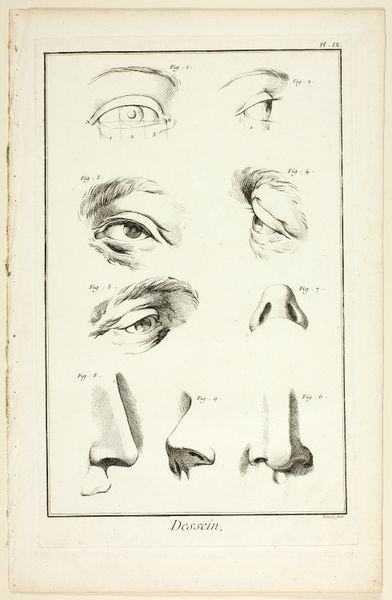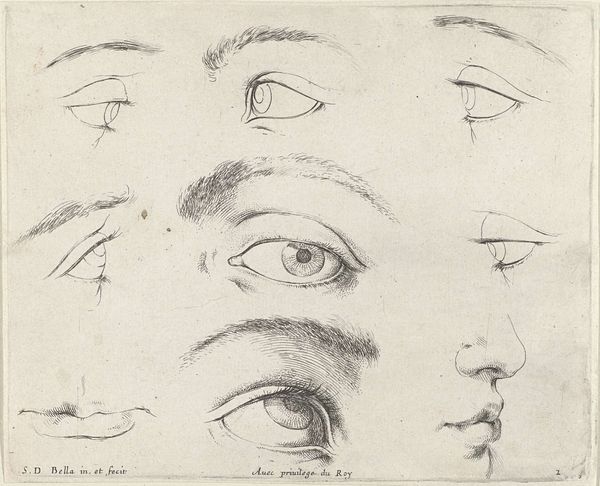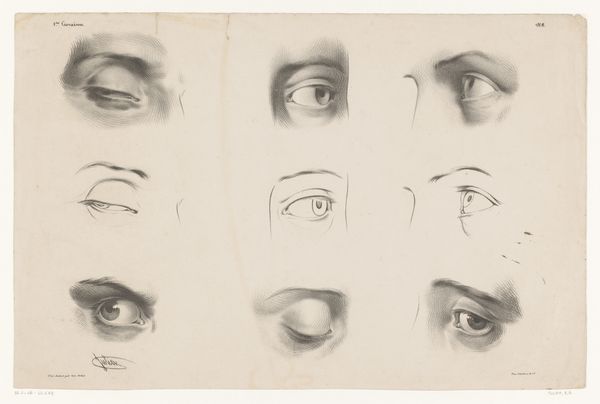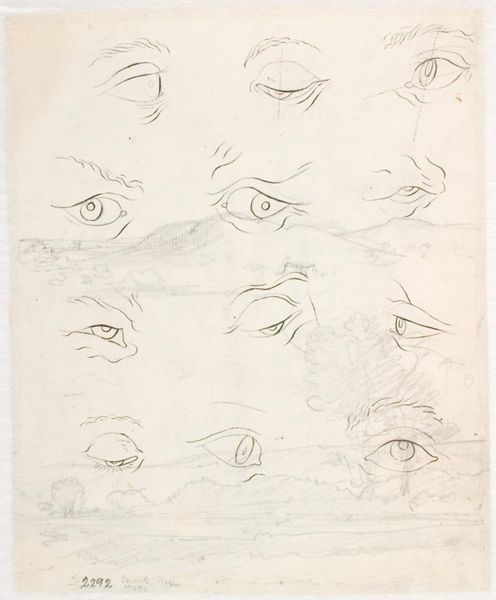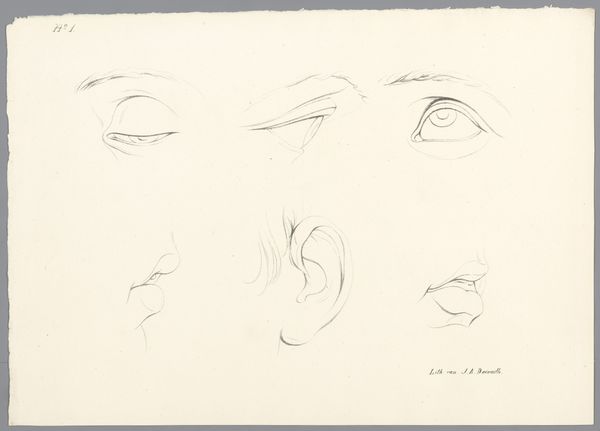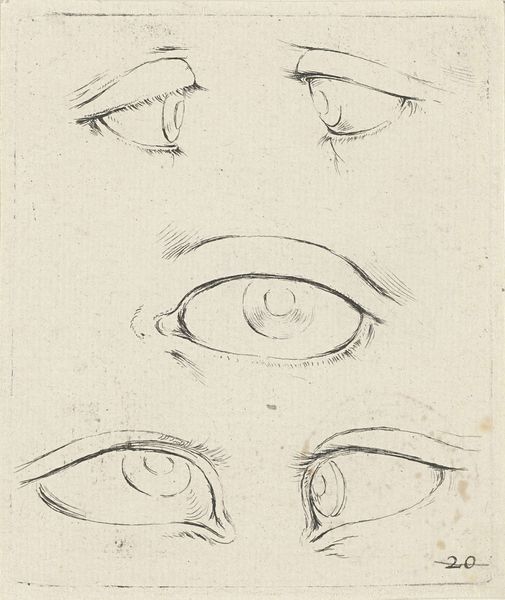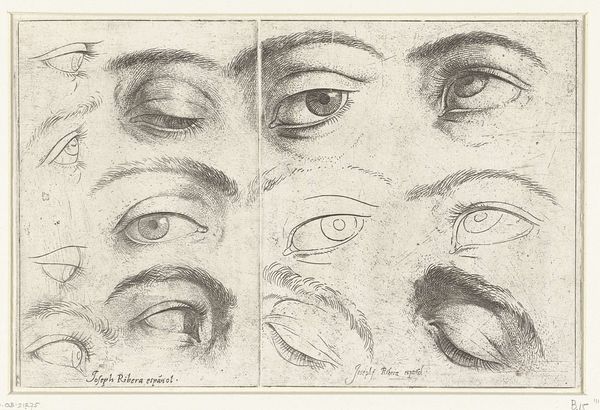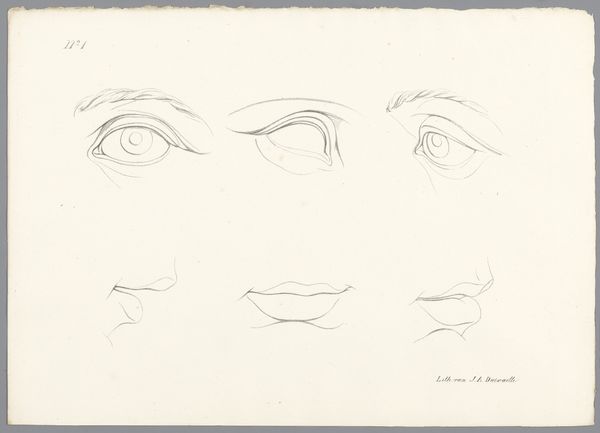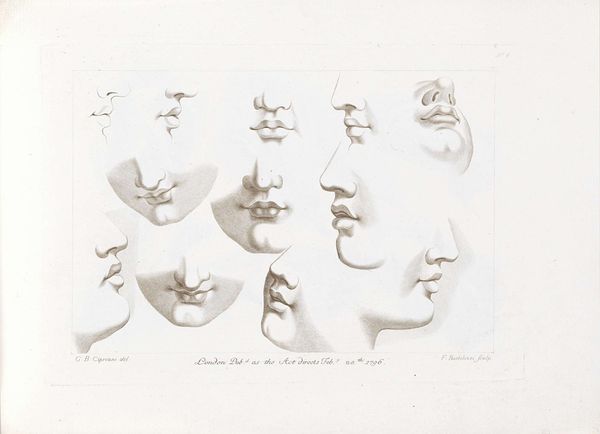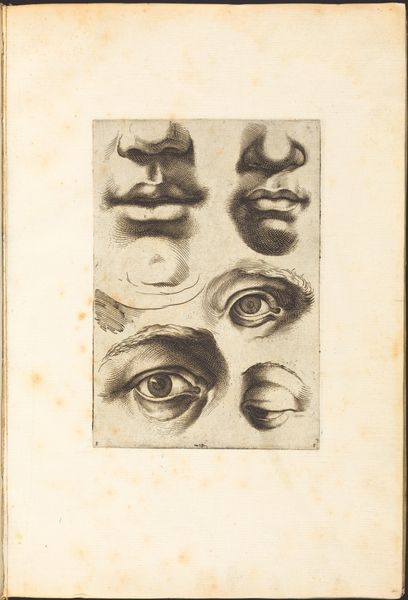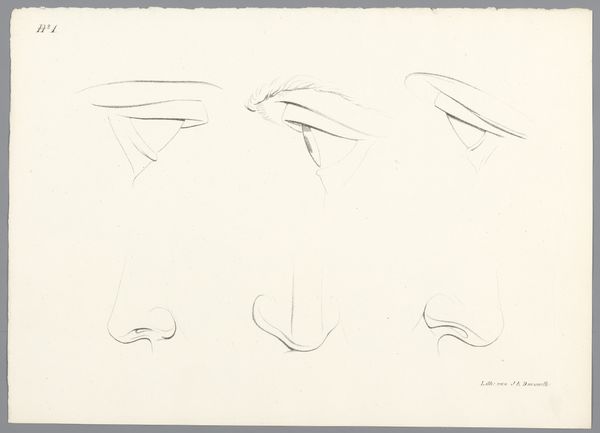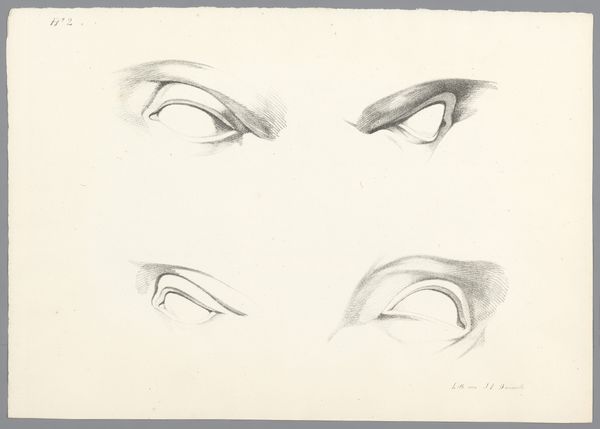
drawing, pencil
#
pencil drawn
#
drawing
#
pencil sketch
#
figuration
#
form
#
pencil drawing
#
pencil
#
line
#
academic-art
Dimensions: height 220 mm, width 310 mm
Copyright: Rijks Museum: Open Domain
Curator: I see... twelve eyes, all gazing in slightly different directions, rendered delicately in pencil. This captivating sheet, known as "Twaalf ogen," which translates to "Twelve Eyes", is attributed to Francesco Bartolozzi, possibly around 1796. Editor: Oh, wow! The sheer repetition is what hits me first. It’s a bit unsettling, yet strangely hypnotic. They all seem to possess different depths, some vacant and some intense, almost like a personality assigned to each individual eye. Curator: Exactly. As an iconographer, you’ll appreciate how the eye has functioned as a potent symbol across cultures. Representing not just sight but also knowledge, vigilance, judgment. Here, Bartolozzi gives us a clinical study. He gives such character, don’t you agree? Editor: Absolutely. I love how some are rendered with such depth and shading, while others remain more skeletal, like pure outlines. There’s an intentionality here; he seems to be dissecting the very essence of sight and how it translates onto paper, wouldn't you say? Curator: Well said. His approach straddles the line between scientific observation and artistic exploration. He presents each eye almost as if under a microscope, capturing subtle variations in form and shadow. Think about that gaze; are they our observers or we theirs? Editor: That question brings it to life, doesn’t it? These aren't just eyes; they are portraits of perception, of consciousness itself. Given that it was around 1796, and therefore close to The French Revolution, are they an echo of some kind of wider fear about seeing, being watched, or seeing too much? It's all about decoding... Curator: Intriguing! This piece may speak to something deeper, like our relationship with scrutiny and introspection. I’m left wondering what secrets these twelve eyes have witnessed – or perhaps, what they are concealing. What's hidden is always so seductive, don't you find? Editor: Indeed, and Bartolozzi invites us to meet the depth within simplicity itself, and from there, consider how that might be about something far deeper that resides just beyond the eye. A very suggestive offering... thank you for sharing.
Comments
No comments
Be the first to comment and join the conversation on the ultimate creative platform.
